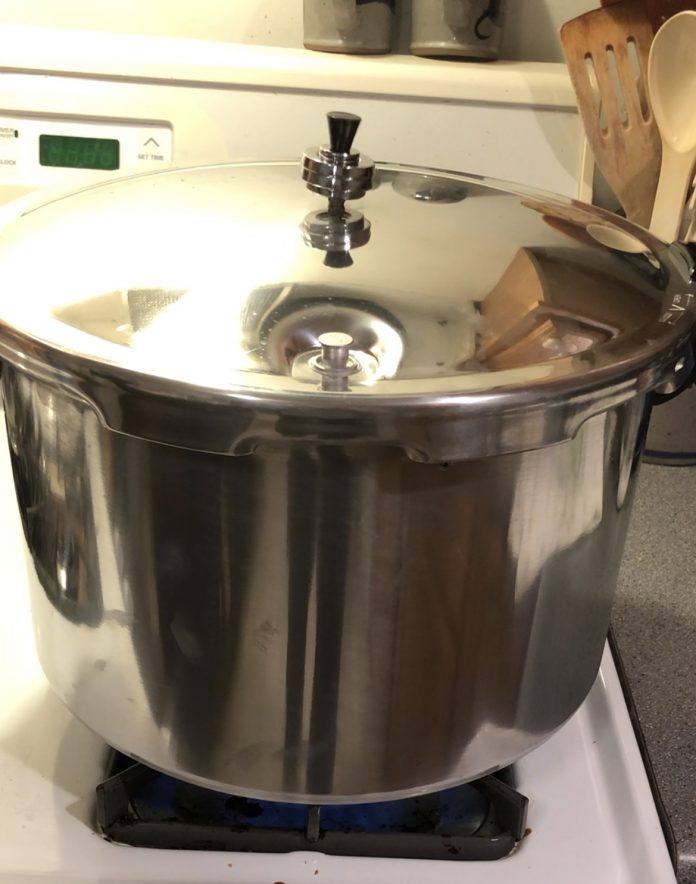
Remember way back in January when I made a post about Goals?
Well 2020 turning out to be what it has, I didn’t get a whole lot on that list accomplished. But during my recent week off I did finally manage to check one of those things off the list. I just learned how to pressure can! Another “prepper” level achieved and skill level unlocked.
“Big deal” you say – you use your Instant Pot pressure cooker all the time- you say.
Well let me explain a few things.
Think about your Instant Pot as an automobile manufactured in 2020 – with automatic transmission, idiot lights on the dash which constantly monitor the engine, back-up camera, lane drift warnings, and remote start.
Then look at an actual pressure canner, which is more akin to your grandfather’s 1963 Buick. It has a manual transmission, manual steering (ie: no power assist), hand crank windows, and might not even have seatbelts. That’s the big deal.
My brand new (as of last December when I bought it) Presto 16 quart pressure canner is a completely manual affair. There are a couple safety features, but they are entirely mechanical. My own brain is the only processor that is managing the operations on this baby.
“Wait” you say, “but my InstantPot has a ‘canning button’ .”
Yeah, isn’t that cute? The button may say “canning”, but independent testing revealed that those models did not achieve and maintain a consistent enough pressure and temperature to kill botulism spores. Therefore, it is NOT safe to use for canning low acid foods.
Therefore, if you want to home-can low acid foods like meats, vegetables, soups and the like, you are left with learning how to drive your grandfather’s Buick. So that’s what I’m talking about. And THAT’s why I’m so proud of myself.
Why do you need pressure, and what’s low acid, you ask?
In order to understand why all this is important, you need to understand the reasons for canning in the first place. While cooking can be considered an art, home canning is most definitely a SCIENCE.
Briefly, the canning process uses scientific principles to ensure that food spoilage organisms – including human pathogens – are killed within the preserved food, and then are prevented from re-entering until the jar is opened and exposed to the air again.
The science involved includes the interplay between mathematics, physics and microbiology. There are lots of very smart people who have tested these procedures and determined them to be the best current and safe way to preserve food. The National Center for Home Food Preservation at the University of Georgia is the biggest resource, but many state extension agencies – including Clemson University and Utah State University – maintain websites and test recipes for safety.
Random people on YouTube are not necessarily using safe practices or recipes, so beware. Just as with safe firearms practices, you can’t always trust the internet. Know who you are getting your information from.
There are very specific steps and procedures to be followed in order to ensure a safely canned product in the end. Deviating in any way can risk the health of yourself and your family. And the dangers are not always obvious.
The presence of some spoilage organisms, such as molds, is visible. Some organisms produce an “off” smell. Some organisms may produce a gas or a color change to signal that the food is contaminated and not safe to eat. But the really big scary problem is Clostridium botulinum toxin , which is tasteless, colorless, and odorless.
This organism grows well in an environment without oxygen – like a sealed jar. When it grows, the bacterium secretes a chemical that is known as one of most potent neurotoxins in the world.
Here’s a nerdy factoid for you. The word “botulism” comes from the Latin word “botulus”, or “sausage” – because the first recognized deadly outbreaks of this type of food poisoning involved sausage. So there’s a thing we both didn’t know before.
Safe home canning (or any canning – even commercial operations) involves creating conditions in which the hardy endospores of the botulism bacteria cannot survive and reproduce.
A high acid environment (pH less than 4.6) inhibits the germination of botulism spores, which is why you can waterbath-can high acid foods like fruits and berries, and pickled foods like – well, pickles.
But meats, vegetables, soups, etc are low acid, and thus cannot be processed in a simple boiling water bath.
No, you cannot just “boil it longer” in a regular water bath. That’s a common and dangerous misconception. Because no matter how long you boil those jars of food, the temperature will never go above the boiling point, or 212F at sea level. At higher altitude water boils at an even lower temperature than that.
In order to kill spores of Clostridium botulinum you need to achieve and maintain a minimum temperature of 240F. (250F is the Commercial Standard) The only way for that to happen on our planet is to apply pressure to the system. Thus you need a closed vessel which will build up pressure via steam – a pressure canner.
And it’s not just the procedures for the canner itself that are involved. There are other considerations like the density and texture of the food in the jar, “headspace” (how much air space between the top of the food and the lid), the size of the jar, and processing time. These are all variables that must be considered in the safety of the final product. That’s why it’s important to know what you are doing, and follow tested recipes and procedures when home canning.
See the previous links provided for more information on the hows, whys, and wherefores. But that gives you an idea of the high stakes involved in IMPROPER canning or even making an honest mistake. Little considerations like unintentional paralysis and death kinda added to my intimidation – imagine that.
In the past year or two I’ve been doing a lot of reading up about safe canning, and also joined a safe canning group on social media. This group is SO adamant about safe practices, that the phrases “grandma did it” and “no one died” earn you an almost immediate appointment with the ban hammer. (Just because grandma survived her game of botulism roulette doesn’t mean it’s a safe practice. And some previous practices are no longer considered safe) So between the knowledgeable folks on that group, and reading up at the NCHFP, I gained enough confidence to take the plunge.
One would think that since I used to run the microbiology lab room-model autoclave that I would not be intimidated by a stove top pressure canner. Except I was. I tend to allow myself to be intimidated by things I have no experience with (and things that might blow up). That’s why I’m always posting about trying new things and forcing myself into new situations. Because if I don’t push myself, my natural inclinations would have me sitting in a dark corner. Fortunately my natural curiosity drive is stronger than my intimidation factor.
I started learning simple water-bath canning of high acid jams, applesauce, etc a couple years ago. I didn’t need to can low acid vegetables, because I have a dehydrator. But in order to learn to can meat I needed to learn to use a pressure canner. I bought one last year after Christmas and it has sat in my cupboard ever since – until last week.
You may remember in my turkey post that this was going to be my excuse for learning to can meat. And so it was.
I had eleven days off over Thanksgiving and no one at home but me, so I spent nearly all of that time in the kitchen, pushing my boundaries.
I started Wednesday night after work and did a test run of procedures using only water in the jars. First, I had to find out what my location’s elevation above sea level was so I could choose the proper weighted regulator/rocker to produce the pressure I needed for my location. I am at 1200 ft, so I needed the rocker weight for 15 pounds of pressure.
The reason for the test run was because I wanted to note how long it took for the water to boil on that burner and what settings on the stove knob it required. I noted the ten minute steam venting process and what stove settings that required. Then I noted how long after the weight was placed on the steam pipe it took for the system to come to pressure and the weight to start rocking, and also the stove setting for that. Yes, I’m a control freak. That’s how I deal with uncertainty – baby steps and control.
On a side note, the social media group taught me what determines whether the pressure weight is rocking appropriately. Apparently you want a slow, graceful “Hula”, not a frenzied “Belly Dance”. Huh – who knew?
As you can imagine there’s a fair bit of variability and tweaking involved til you get a feel for what it takes to maintain a consistently heated and pressurized canner. I did it with just water so that there was no chance of ruining any actual food while I learned the ropes.
With that accomplished and my confidence increasing, I woke up early Thanksgiving morning and started canning. I first did grilled turkey breast chunks in broth (hot pack method). That was followed by canned turkey broth, split pea w/ham soup, and ham-n-bean soup (safe recipes) over the succeeding days. I was a little nervous with each new recipe, but in the end it was fun!
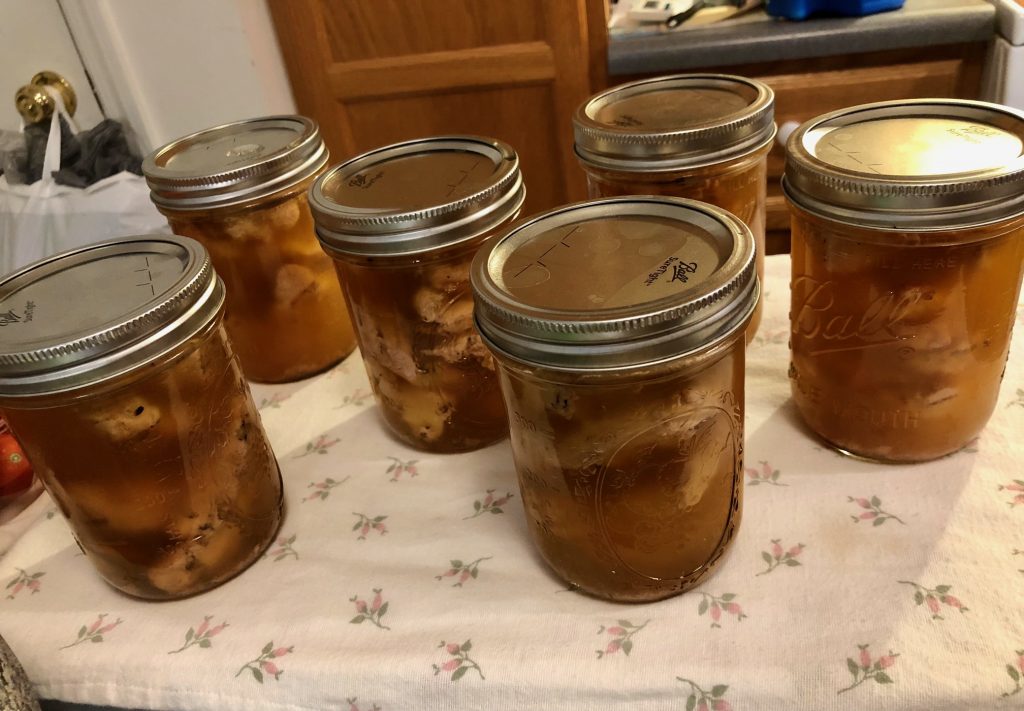
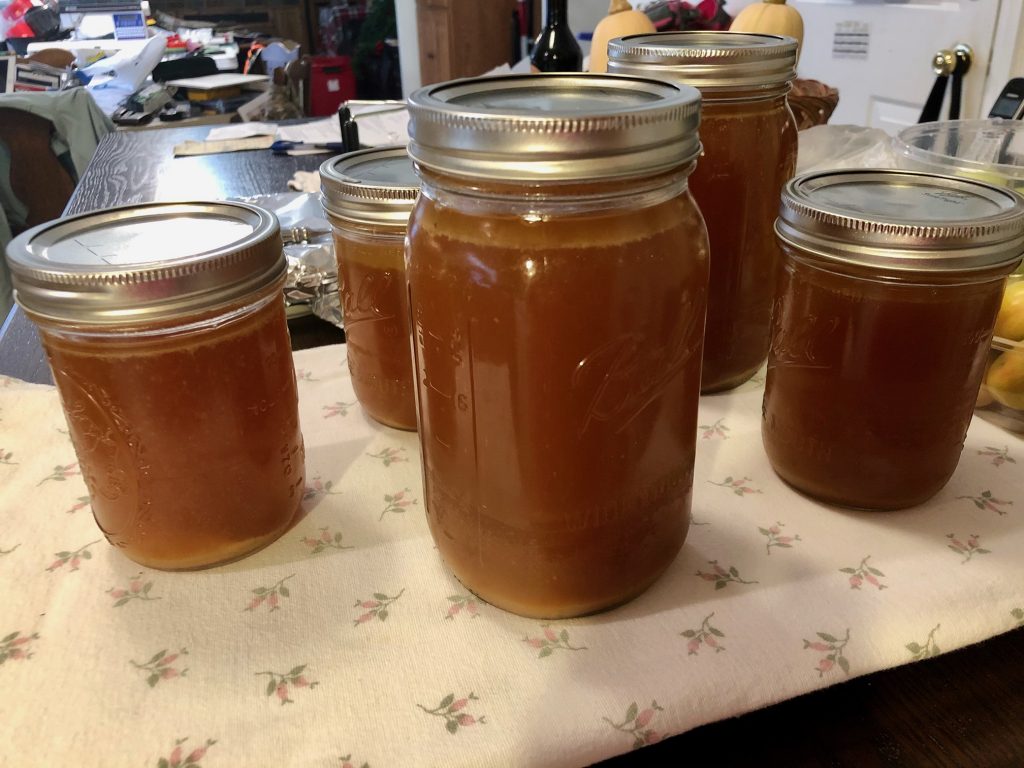
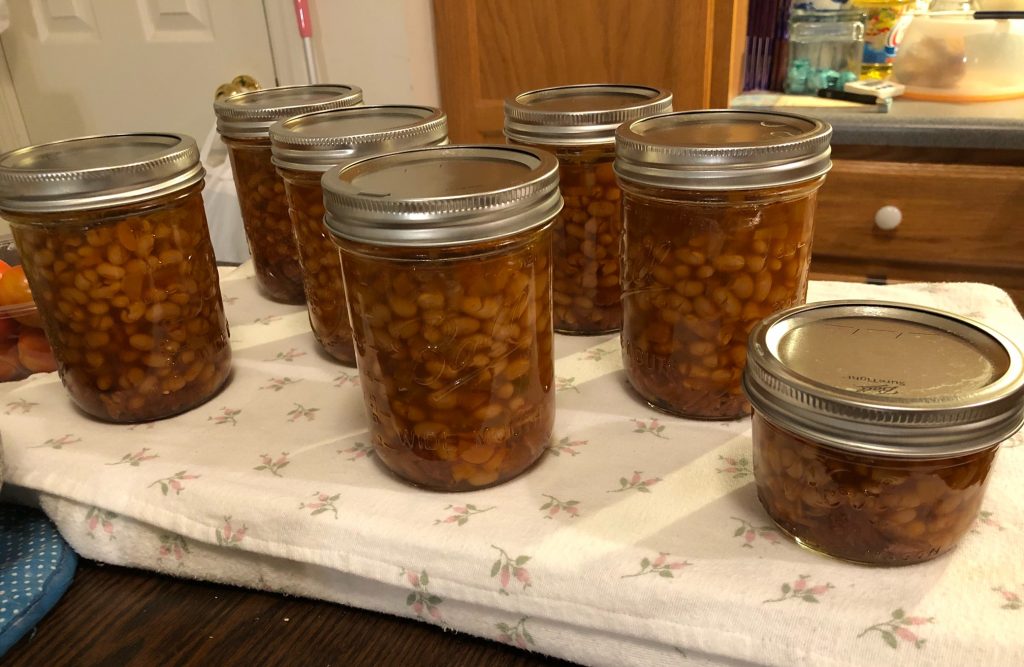
Next I want to dig through my freezer and try chunks of boar or venison. Lots of people can their red meat game with beef bullion to soften the flavor and texture of the tougher cuts.
This is actually kinda fun and satisfying now that I am over the fear hump. Granted it’s a good bit of work and mental concentration upfront. But on the back end, I can just open a jar, heat and eat. Plus, the meat is now shelf stable for a couple years and will not go bad in a power outage. That seems worth the work to me.
Since I have a gas stove, I realized that I “could” even do this on an emergency basis “during” a power outage to salvage meat in the freezer. I’d just have to light the stove by hand. I have read that some people even do the entirety of their canning on portable propane burners on the back porch in the summer to keep the heat outside. So that’s an emergency option to consider and plan for as well.
I am so glad that I pushed myself to get over this hump. Now there are a huge array of new recipes and things to can that are open to me that were not before. Not to mention the feeling of security of having shelf stable meats and ready to heat soups available in case of emergency. (Or in case I catch the ‘Rona and just don’t feel like cooking). I just picked up another 20-pound turkey for $0.59 a pound. Cheapest poultry I’ll find all year, so I’m not done yet.
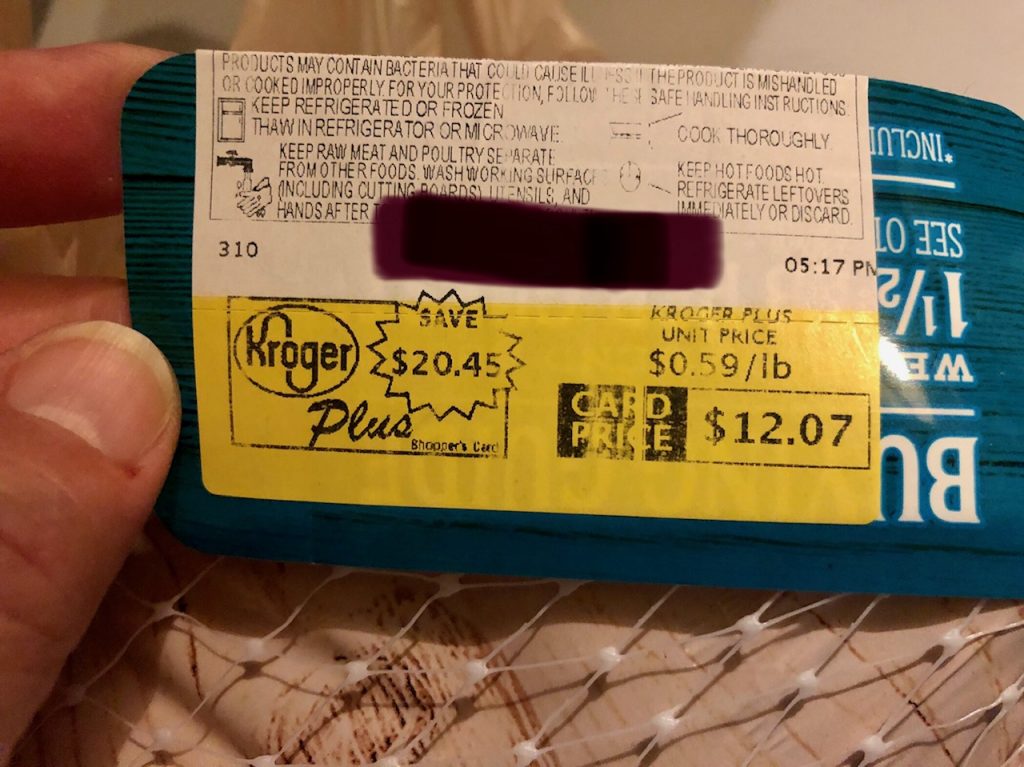
I’ll probably be messing with this pressure canning thing and new recipes for the rest of the winter, so it probably won’t be the last time you hear from me about pressure canning. But bear with me, it’s a new and exciting learning curve, and you know how I am about my motto – “Never Stop Learning”.



